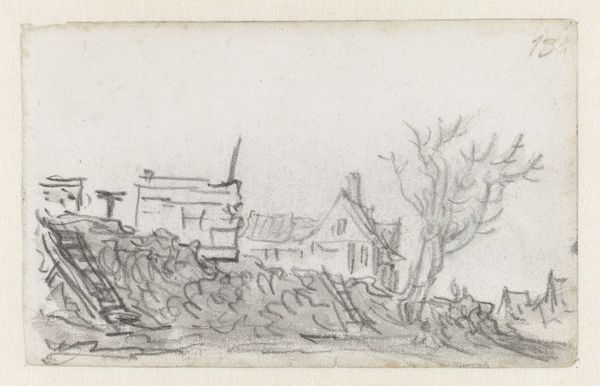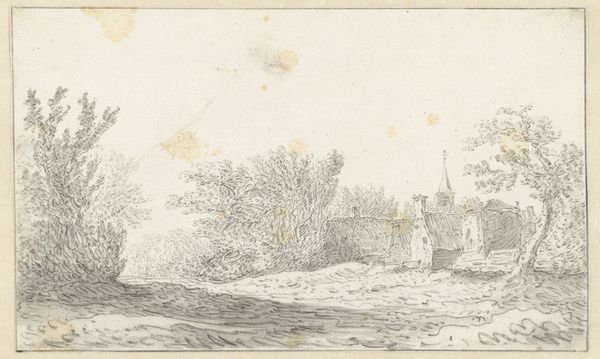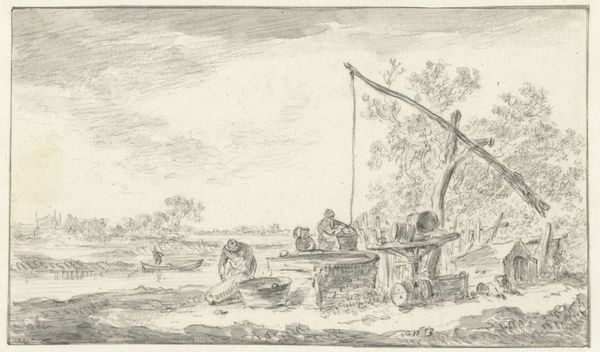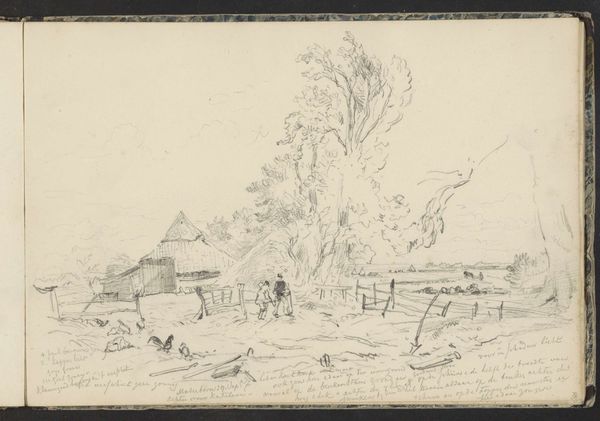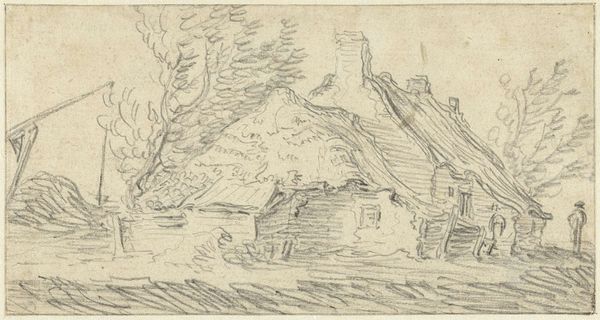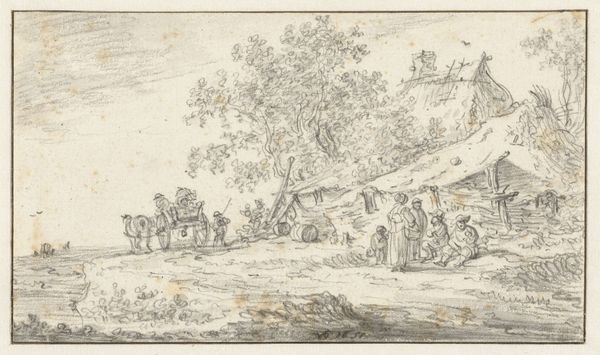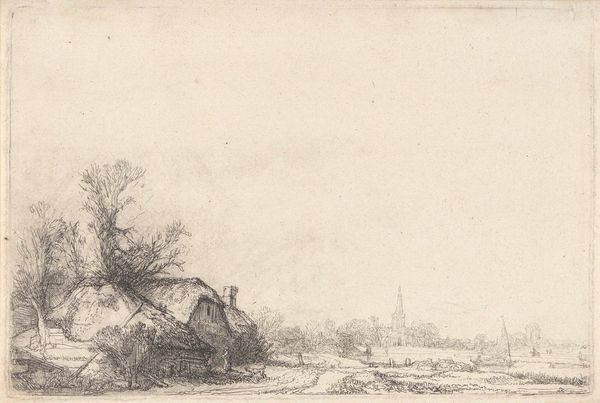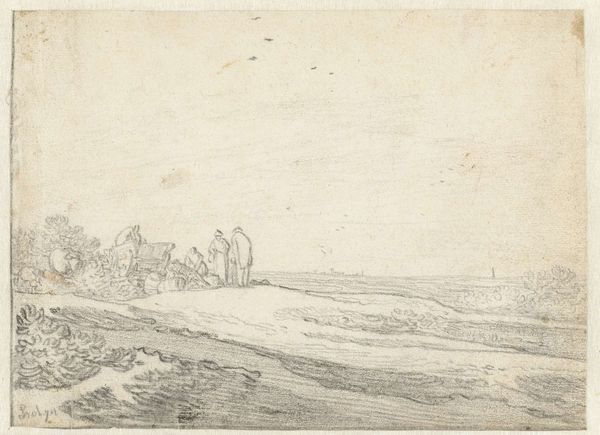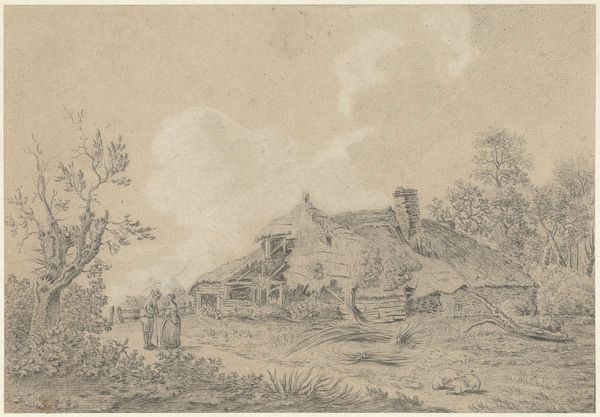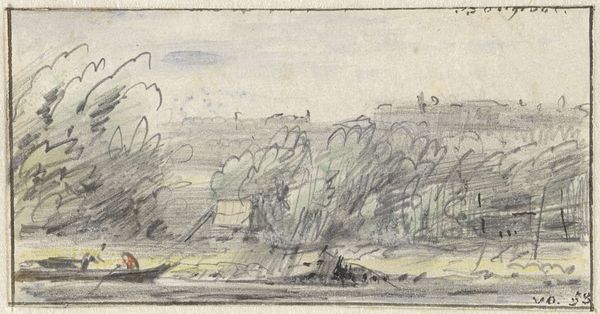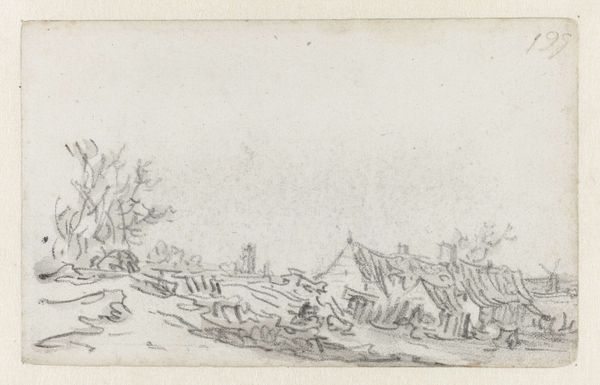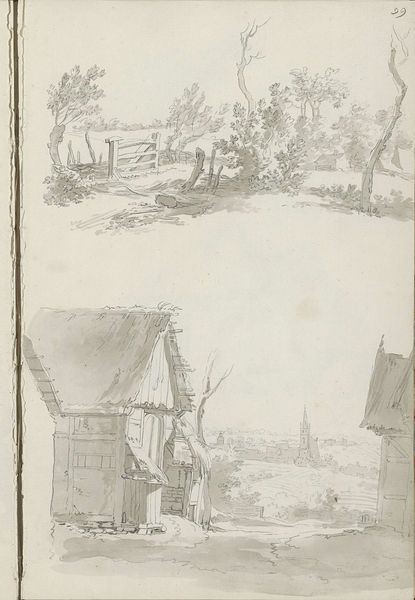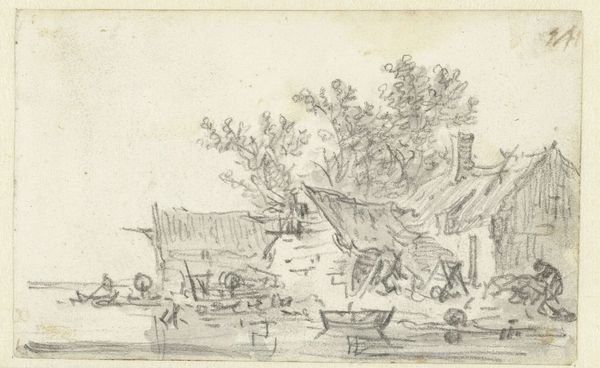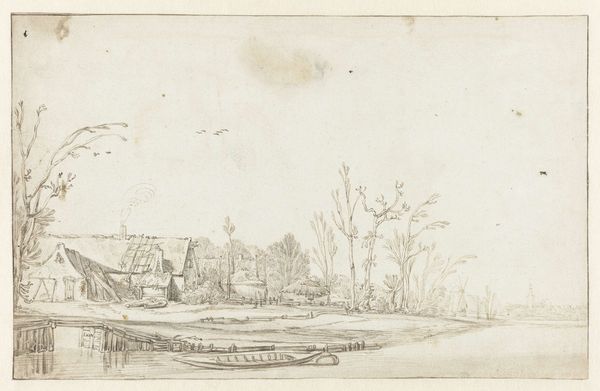
drawing, pencil
#
drawing
#
dutch-golden-age
#
pen sketch
#
pencil sketch
#
landscape
#
pencil
Dimensions: height 90 mm, width 139 mm
Copyright: Rijks Museum: Open Domain
Curator: Here we have Jan van Goyen's "Watermolen," a drawing that the Rijksmuseum dates sometime between 1606 and 1656. It's executed in pencil and pen. What are your immediate impressions? Editor: A feeling of quiet, a sort of hushed stillness. The monochromatic palette gives it an almost dreamlike quality. It’s like a half-remembered scene. And yet, there's also a clear depiction of the peasant class during the Dutch Golden Age. Curator: Precisely. Van Goyen was a master of landscape, and here he captures the essence of the Dutch countryside and rural life. His landscapes also show us a strong class hierarchy during the Golden age. Editor: I'm intrigued by the watermill itself. It looks quite ramshackle. You almost get a sense of decay. Are we meant to read something symbolic in its disrepair? Curator: It is suggestive. While prosperous through overseas trade, there was much unevenness. Perhaps Van Goyen is hinting at the harder realities of rural life in the Netherlands during this period. It also hints at how rural infrastructure required regular and considerable expense in upkeep. Editor: I also like the presence of the birds scattered atop the watermolen. Despite how sparse and ephemeral the landscape appears, nature remains ever present. Did it intend to inspire viewers? Curator: Perhaps. He captured something essential about the Dutch relationship with their landscape. At a time where much land required consistent and persistent maintenance to prevent constant flood damage, there was a relationship that bound ordinary peasants together to manage this essential and ever present need. Van Goyen would continue his family line of artists, which suggests an effort to represent a changing cultural moment in the Low Countires. Editor: Absolutely, the sketch embodies a melancholic, thoughtful consideration for life at a given historical juncture. Curator: Indeed. It prompts reflection on both the universal themes of human existence and how societies can work together to progress over historical time.
Comments
No comments
Be the first to comment and join the conversation on the ultimate creative platform.
